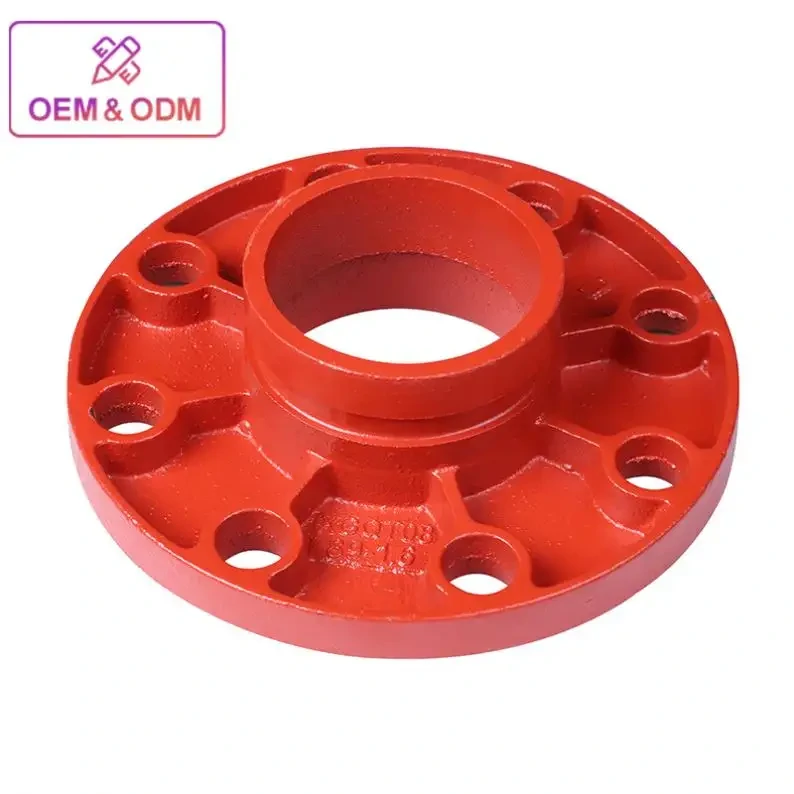Grooved fittings contribute to the overall efficiency of a piping system in several ways:
- Ease of Installation: Grooved fittings are designed for quick and easy installation compared to traditional threaded or welded fittings. Their grooved design allows for simple alignment and connection, reducing installation time and labor costs.
- Reduced Downtime: Because grooved fittings are easier to install, maintenance or repair tasks can be completed more quickly, resulting in reduced downtime for the piping system. This minimizes disruptions to operations and helps maintain productivity.
- Flexibility: Grooved fittings offer flexibility in design and layout, allowing for easier modification or expansion of the piping system as needed. Additional fittings can be easily added or repositioned without the need for extensive rework or specialized tools.
- Adaptability: Grooved fittings are compatible with a wide range of piping materials, including steel, stainless steel, copper, and PVC. This versatility allows for seamless integration into various types of piping systems and applications.
- Space Saving: Grooved fittings have a compact design that requires less space compared to other types of fittings. This is especially beneficial in tight or confined spaces where traditional fittings may be difficult to install.
- Seismic Resistance: The mechanical interlocking design of grooved fittings provides enhanced resistance to seismic forces and vibrations. This helps maintain the integrity of the piping system during earthquakes or other seismic events.
- Reduced Maintenance: Grooved fittings require minimal maintenance over their lifespan due to their durable construction and reliable sealing mechanisms. This helps reduce ongoing maintenance costs and extends the service life of the piping system.
- Enhanced Flow Characteristics: Grooved fittings feature smooth, uninterrupted flow paths that minimize pressure drop and turbulence within the piping system. This promotes efficient fluid or gas flow and helps optimize system performance.
- Reliable Sealing: Grooved fittings utilize advanced sealing technologies, such as EPDM gaskets or flexible couplings, to create leak-tight connections. This ensures reliable performance and prevents costly leaks or fluid loss.
- Compliance with Standards: Grooved fittings are manufactured to meet or exceed industry standards for quality, performance, and safety. Compliance with these standards ensures that the piping system operates efficiently and reliably.
Overall, grooved fittings contribute to the overall efficiency of a piping system by streamlining installation, reducing downtime, offering flexibility and adaptability, and providing reliable performance over the long term.
How do cross tee fittings handle pipe deflection or misalignment?
Cross tee fittings are designed to handle pipe deflection or misalignment in a piping system through several key features and mechanisms:
- Flexible Grooved Design: Cross tee fittings typically have a grooved design that allows for some flexibility in the connection. This flexibility enables the fitting to accommodate slight pipe misalignment or deflection without causing stress or strain on the piping system.
- Swivel Capability: Some cross tee fittings may have swivel capabilities, allowing them to rotate around the axis of the pipe. This feature helps compensate for minor misalignments by adjusting the orientation of the fitting to align with the pipes it connects to.
- Expansion Joints: In situations where significant pipe deflection or movement is expected, expansion joints may be installed in conjunction with cross tee fittings. Expansion joints absorb movement and allow for greater flexibility in the piping system, reducing stress on the fittings and pipes.
- Flexible Couplings: Cross tee fittings are often used with flexible couplings, which provide additional flexibility and movement in the piping system. Flexible couplings can accommodate pipe misalignment and deflection while maintaining a leak-tight seal between pipes and fittings.
- Adjustable Groove Systems: Some cross tee fittings feature adjustable groove systems that allow for fine-tuning of the connection alignment. By adjusting the position of the grooves, the fitting can compensate for minor misalignments and ensure a proper fit with the pipes.
- Compliance with Standards: Cross tee fittings are manufactured to meet or exceed industry standards for quality and performance. This includes standards related to dimensional tolerances, which ensure that fittings can accommodate variations in pipe alignment while maintaining proper function.
- Installation Techniques: Proper installation techniques play a crucial role in handling pipe deflection or misalignment with cross tee fittings. Careful alignment and adjustment during installation can help ensure that the fittings are properly positioned and seated, minimizing stress on the piping system.
Overall, cross tee fittings are designed to provide flexibility and accommodation for pipe deflection or misalignment in a piping system. By incorporating features such as flexible grooved designs, swivel capabilities, and expansion joints, these fittings help ensure reliable and efficient operation even in challenging installation conditions.
